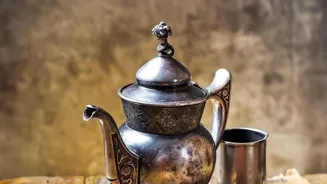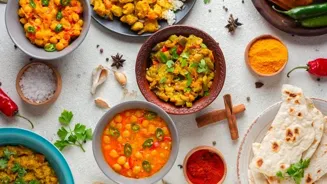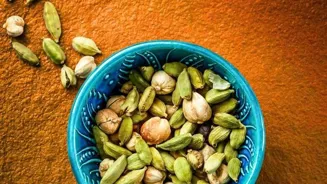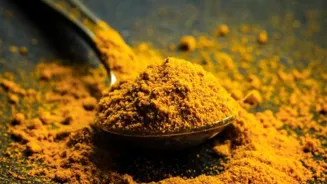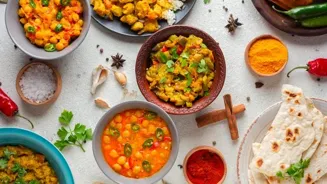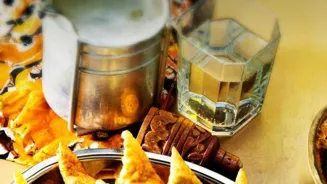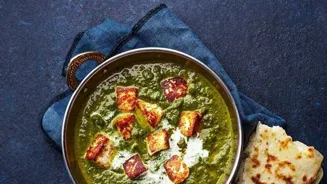Unveiling Colonialism's Influence on Indian Cuisine - Discover 7 Key Ingredients shaping our culinary heritage
Indian cuisine, a vibrant tapestry of flavors and aromas, is often celebrated for its rich
history and diverse regional variations.
While we take pride in our traditional dishes, it's important to acknowledge the subtle yet significant influence of colonialism on the ingredients we use and the way we cook.
The British Raj, lasting for centuries, left an indelible mark on India, and its culinary impact is still evident in our kitchens today. It's not about saying our food is "British" now, but understanding how certain ingredients, once foreign, became so integral to our cooking.
This isn't about changing history or assigning blame, but rather appreciating the evolution of our food culture. Let's explore seven key ingredients that have become woven into the fabric of Indian cuisine thanks to this colonial influence.
These additions, initially introduced by the colonizers, underwent transformations, getting incorporated into the existing methods of cooking and ingredients.
The Mighty Potato (Aloo): From Andes to Aloo Tikki
The humble potato is now a staple in almost every Indian household. From aloo paratha to aloo gobi, this versatile vegetable finds its way into countless dishes. However, the potato is not native to India.
It originated in the Andes region of South America and was introduced to India by the Portuguese in the 17th century. The British then further popularized its cultivation and consumption.
Initially, the potato was met with skepticism, but its ease of cultivation and adaptability to different climates quickly made it a favorite among farmers. It became a readily available and affordable source of carbohydrates, particularly for the poorer sections of society.
The potato quickly crossed all barriers and religions, and it became a staple and beloved food product in a country where it was unknown prior to colonialism. Without it there would be no spicy aloo filling in samosas or aloo bonda.
The Fiery Chili (Mirchi): A Spicy Transatlantic Journey
Chilies, the backbone of Indian cuisine, providing that characteristic heat and spice, also have a fascinating history. Like the potato, chilies originated in South America and were introduced to India by the Portuguese. Before chilies, Indians primarily used black pepper and ginger for spice.
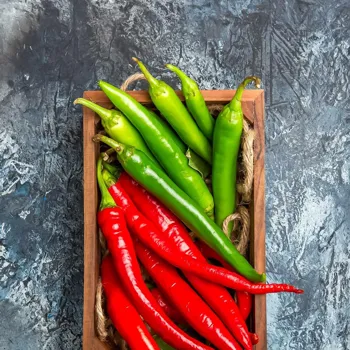
The fiery kick that chilies offered proved to be a game-changer. With the climate being favorable, it quickly took root across the country, leading to a diverse range of chili varieties, each with its unique flavor profile and pungency.
From the mild Kashmiri chili to the extremely hot Bhut Jolokia, chilies have become an indispensable part of Indian cooking, adding depth, dimension, and that crucial zing to our food. Before colonialism, black pepper was the main source of spice!
Now imagine an Indian curry without the spice of chilies.
The Refreshing Tomato (Tamatar): A Culinary Revolution
The tomato, another South American native, entered the Indian culinary scene through colonial trade routes. While initially used sparingly, the tomato eventually became a cornerstone of Indian cooking, particularly in sauces, curries, and chutneys.
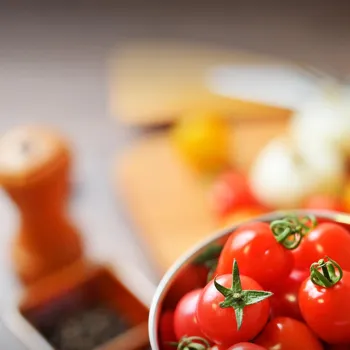
Its acidity and sweetness added a new dimension to Indian dishes, enriching the flavor profiles and enhancing the overall taste. The tomato is also integral in several dals, vegetables and many gravies. The tomato, originally unfamiliar to Indian palates, is virtually a staple these days.
It is extensively used for all kinds of cooking making it virtually inescapable. The tomato became an integral part of Indian cuisine, proving that global flavors could find a home and flourish in the Indian kitchen.
You would be hard-pressed to find an Indian restaurant lacking dishes prepared with tomatoes.
The Versatile Cabbage (Patta Gobhi): From Europe to Sabzi
The cabbage, a leafy vegetable originating in Europe, was introduced to some regions of India during the colonial period. While not as ubiquitous as the potato or tomato, cabbage has found its place in various Indian dishes, particularly in salads, stir-fries, and vegetable preparations.
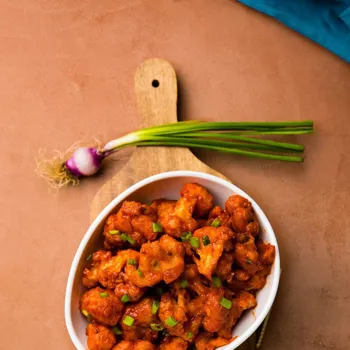
Its mild flavor and crunchy texture provide a refreshing contrast to the spices and richness of other ingredients. It is commonly used in Gobi Manchurian a dish that has emerged out of the colonial influence.
Cabbage also made an appearance in our simple everyday cooking in the form of "patta gobhi ki sabzi" a simple stir fry that is tempered with common Indian spices. Without colonialism the Indian culinary would have stayed devoid of this ingredient.
The Aromatic Tea (Chai): A British Legacy
No discussion of colonial influence on Indian cuisine is complete without mentioning tea. Today, chai is synonymous with India, and it is part of daily life. However, tea was introduced to India by the British, who sought to break China's monopoly on the tea trade.
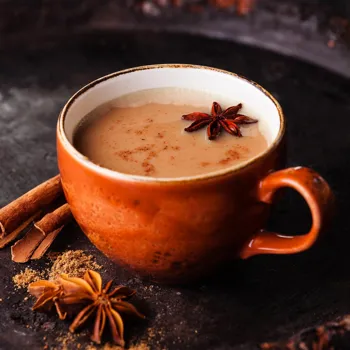
The British established tea plantations in regions like Assam and Darjeeling, and through marketing and promotion, they cultivated a taste for tea among the Indian population.
Soon enough, chai became not just a beverage but a social ritual, a symbol of hospitality, and an integral part of Indian culture. It is widely consumed in every Indian household regardless of caste, religion, economic class; Tea is indispensable.
The popular Chai has transcended its origins and become a symbol of Indian identity.
Refined Wheat Flour (Maida): A Shift in Bread-Making
While India has a rich tradition of using whole wheat flour (atta) for making roti and other breads, the introduction of refined wheat flour (maida) by the British had a subtle impact on Indian cuisine.
Maida, with its soft texture and versatility, became a popular ingredient in pastries, cakes, and certain types of breads. While atta continues to be a staple, maida has found its niche in specific culinary applications, adding to the diversity of Indian breads and baked goods.
The fluffy bhaturas that accompany chole, a favorite of the masses, would not be as light and airy if they were not made out of maida. In Indian bakeries maida is widely used to produce different types of snacks that are enjoyed across the country.
AI Generated Content. Glance/InMobi shall have no liability for the content